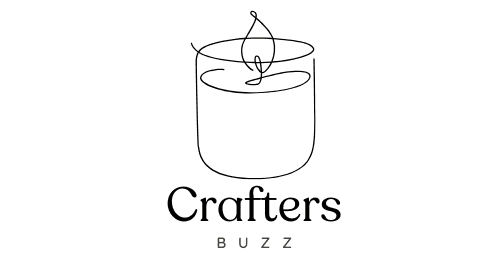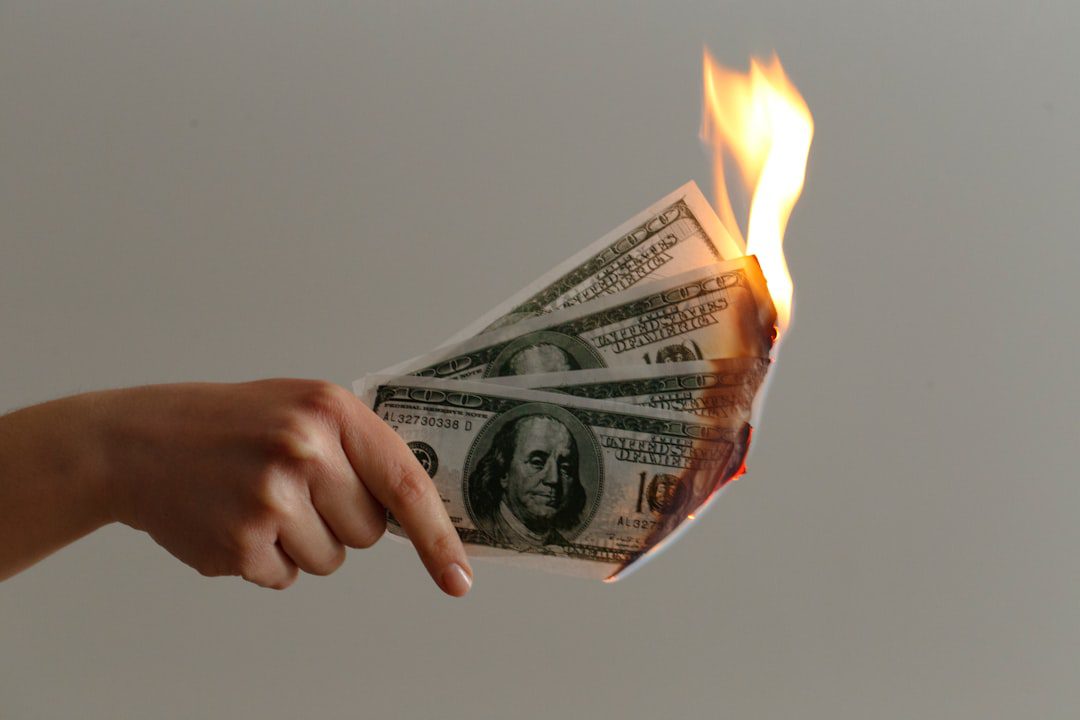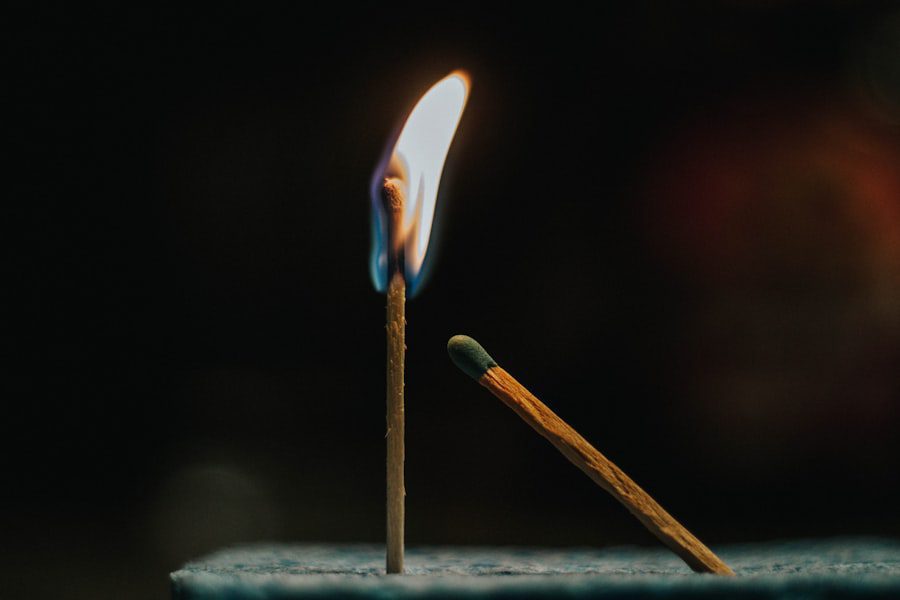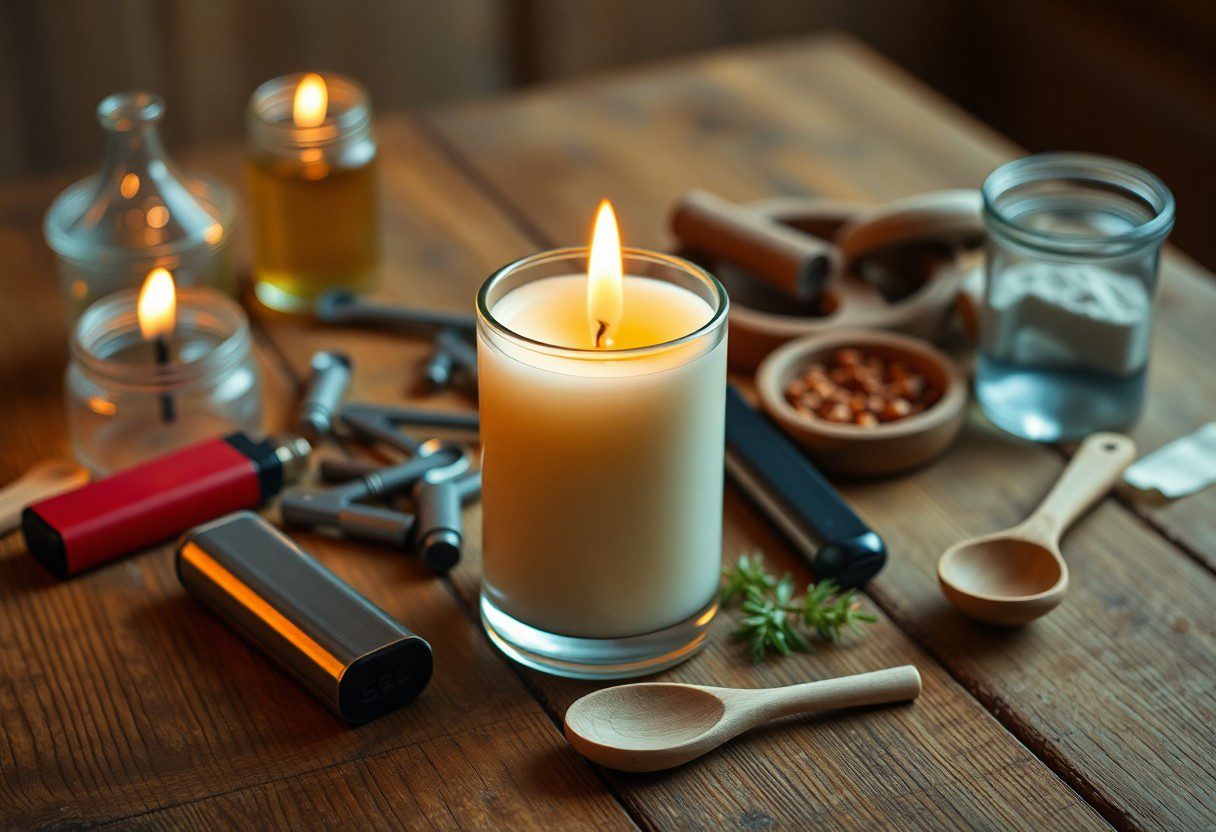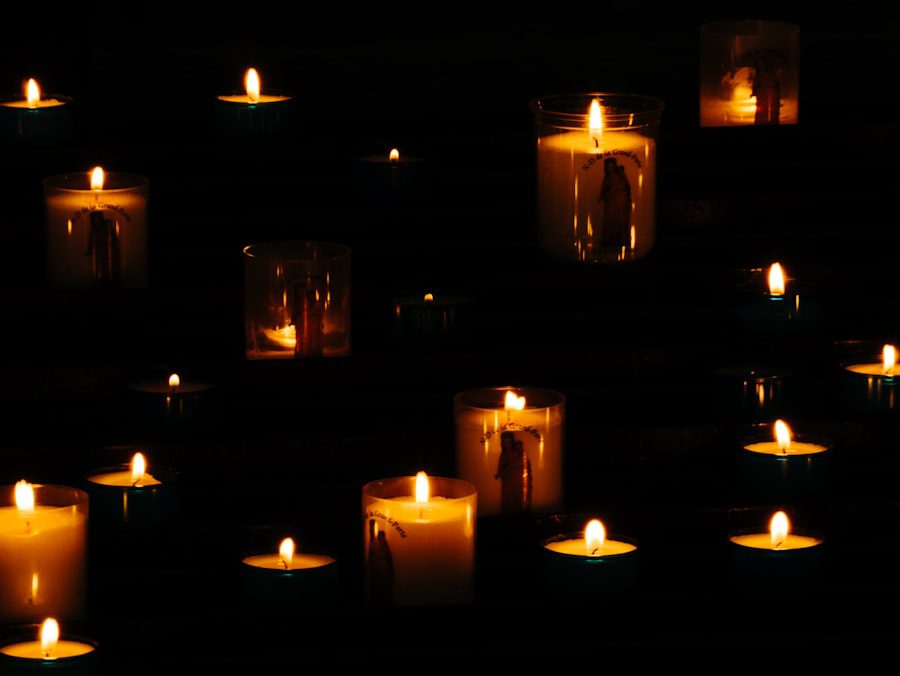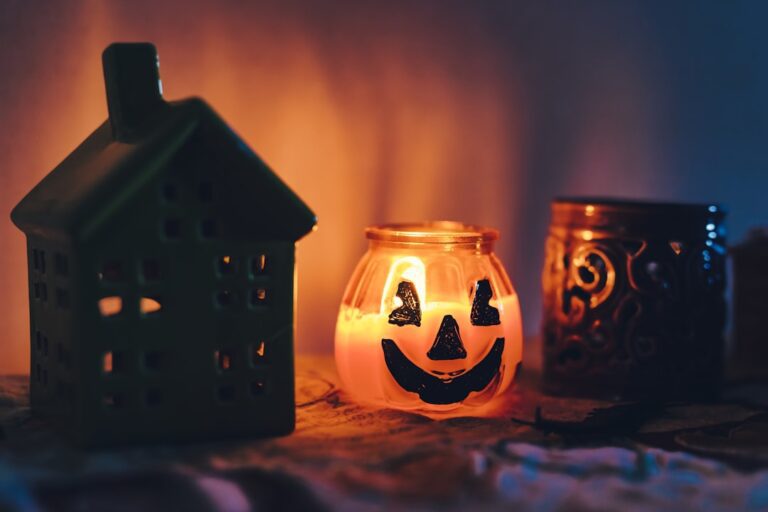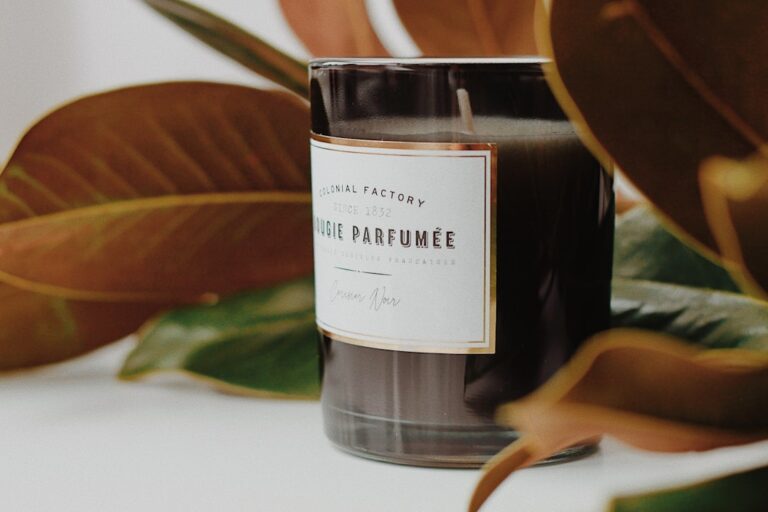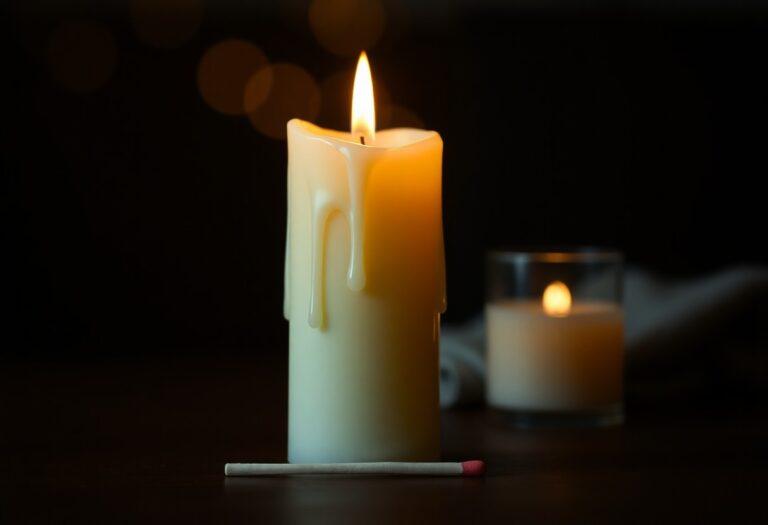How to manage burn times to make candles last longer.
Burn time is a critical aspect of candle performance that can significantly influence the overall experience of using candles. Several factors contribute to how long a candle will burn, including the type of wax used, the size and type of wick, the candle’s shape and size, and even environmental conditions. The chemistry of the wax plays a pivotal role; for instance, paraffin wax typically burns faster than natural waxes like soy or beeswax.
This is due to the molecular structure of the wax, which affects how it melts and vaporizes when heated. Additionally, the presence of additives in the wax can alter its burning characteristics, either enhancing or diminishing burn time. Another important factor is the wick.
The wick’s size, material, and treatment can all impact how efficiently a candle burns. A wick that is too large may create a flame that is too intense, leading to faster consumption of the wax. Conversely, a wick that is too small may not produce enough heat to melt the wax effectively, resulting in tunneling and wasted wax.
Environmental conditions such as drafts, humidity, and temperature can also affect burn time. For example, a candle placed in a drafty area may burn unevenly and more quickly than one in a stable environment. Understanding these factors allows candle makers and users alike to optimize burn time for a more enjoyable experience.
Choosing the right type of wax for longer burn times
The choice of wax is fundamental when it comes to achieving longer burn times in candles. Various types of waxes are available on the market, each with unique properties that influence their burning characteristics. Paraffin wax, while popular due to its affordability and availability, tends to burn faster than natural alternatives.
In contrast, soy wax is derived from soybeans and is known for its slower burn rate and cleaner combustion. This makes soy candles an excellent choice for those seeking longevity in their candle experience. Additionally, soy wax has a lower melting point, which allows for a more even burn and better scent throw.
Beeswax is another natural option that offers impressive burn times. It burns longer than paraffin and soy waxes due to its higher melting point and denser structure. Moreover, beeswax candles emit negative ions when burned, which can help purify the air.
Coconut wax is also gaining popularity for its sustainability and long burn time. It blends well with other waxes and can enhance scent throw while maintaining a slow burn rate. When selecting wax for longer-lasting candles, it’s essential to consider not only the burn time but also the environmental impact and health considerations associated with each type.
Selecting the appropriate wick size and type
Choosing the right wick is crucial for optimizing burn time in candles. Wicks come in various sizes and materials, including cotton, wood, and synthetic fibers, each offering different burning characteristics. Cotton wicks are commonly used due to their versatility and ability to produce a steady flame when properly sized for the candle.
The diameter of the wick should correspond to the size of the candle; a larger candle requires a thicker wick to ensure adequate heat generation for melting the wax evenly. Wooden wicks have gained popularity in recent years for their unique aesthetic appeal and crackling sound when burned. They tend to produce a wider flame, which can enhance scent throw but may also lead to faster wax consumption if not sized correctly.
It’s essential to conduct tests when selecting wick sizes; this involves burning test candles to observe how well they perform in terms of flame height, soot production, and overall burn efficiency. A well-chosen wick will not only extend burn time but also improve the overall quality of the candle experience.
Using proper candle care and maintenance techniques
Proper care and maintenance of candles can significantly influence their burn time and overall performance. One of the most important practices is trimming the wick before each use. A wick that is too long can create an oversized flame, leading to excessive heat that melts the wax too quickly.
Ideally, wicks should be trimmed to about 1/4 inch before lighting to ensure a controlled burn. This simple step can help prevent soot buildup on the glass or container and promote an even burn. Another critical aspect of candle maintenance is ensuring that candles are burned for an appropriate duration during each use.
For optimal performance, it’s recommended to allow candles to burn long enough for the entire top layer of wax to melt—typically around one hour for every inch in diameter of the candle. This practice helps prevent tunneling, where the wick burns down into the wax without melting it evenly across the surface. Additionally, keeping candles away from drafts or direct sunlight can help maintain a consistent burn rate and prolong their life.
Maximizing burn time through proper candle placement
The placement of candles can have a significant impact on their burn time and overall performance. Candles should be positioned in areas where they are less likely to be disturbed or exposed to drafts. For instance, placing a candle near an open window or air vent can cause uneven burning and lead to faster consumption of wax.
Instead, opt for stable surfaces away from airflow where the candle can burn steadily without interruption. Moreover, consider the height at which candles are placed. Elevating candles on stands or holders can help improve airflow around them while also enhancing their aesthetic appeal.
However, ensure that they are still stable and secure to prevent accidents. Additionally, avoid placing multiple candles too close together; this can create heat buildup that may cause them to burn faster than intended. By strategically placing candles in optimal locations, users can maximize their burn time while enjoying their ambiance.
Utilizing candle accessories to extend burn time
Extending the Life of Your Candles with Essential Accessories
Snuffing Out the Competition: The Benefits of Candle Snuffers
Candle snuffers are a must-have accessory for any candle enthusiast. By using a snuffer, you can extinguish the flame without creating smoke or soot residue, preserving the integrity of the candle. This method also prevents excessive heat from causing rapid wax consumption after extinguishing.
Warmth and Fragrance: The Advantages of Candle Warmers
Candle warmers, also known as hot plates, are another useful accessory that can enhance your candle-burning experience. These devices gently heat candles from below without an open flame, allowing for an even melt pool without burning through the wax too quickly. This is particularly beneficial for scented candles, as they release fragrance without consuming the wax at an accelerated rate.
Protecting Your Investment: Decorative Lids and Covers
Using decorative lids or covers can help protect your candles from dust and debris when not in use. Additionally, they help retain fragrance oils within the wax, ensuring that your candles remain fragrant and effective.
Incorporating scent and color choices for longer-lasting candles
The choice of scent and color in candle making can also influence burn time indirectly through their effects on wax composition and wick performance. Scented candles often contain fragrance oils that can alter how wax burns; some oils may cause faster consumption if not balanced correctly with the wax type and wick size. When selecting scents for longer-lasting candles, it’s essential to choose high-quality fragrance oils that are specifically designed for candle making.
Color additives can also play a role in how a candle burns; certain dyes may affect the melting point or combustion characteristics of the wax. For instance, darker colors may absorb more heat than lighter ones, potentially leading to faster melting rates if not properly formulated with appropriate wick sizes and types. Therefore, when incorporating scents and colors into candle designs, it’s crucial to conduct thorough testing to ensure that they do not compromise burn time while still providing an enjoyable sensory experience.
Tips for safely extinguishing and storing candles to preserve burn time
Proper extinguishing techniques are essential for preserving both safety and burn time in candles. While blowing out a candle may seem like an easy solution, it often leads to smoke production and soot buildup on both the wick and container. Instead, using a candle snuffer or dipping the wick into melted wax before straightening it back up can effectively extinguish the flame without creating smoke or damaging the wick’s structure.
When it comes to storing candles, keeping them in a cool, dry place away from direct sunlight is crucial for maintaining their quality over time. Exposure to heat or light can cause discoloration or affect scent potency, ultimately impacting performance during use. Additionally, storing candles upright prevents them from becoming misshapen or developing uneven surfaces that could lead to poor burning characteristics later on.
By following these tips for extinguishing and storing candles properly, users can ensure that their candles remain in optimal condition for longer-lasting enjoyment.
If you’re interested in making your candles last longer, you may also want to check out this article on DIY Beeswax Candles: Crafting with Nature. Beeswax candles are known for their long burn times and natural, clean-burning properties. Learning how to make your own beeswax candles can be a fun and rewarding craft project that will not only help your candles last longer but also add a touch of natural beauty to your home.
FAQs
What factors affect the burn time of a candle?
Factors that affect the burn time of a candle include the type and quality of the wax, the size and shape of the wick, the presence of drafts or air currents, and the ambient temperature.
How can I make my candles last longer?
To make your candles last longer, you can trim the wick to 1/4 inch before each use, avoid burning the candle in a drafty area, and allow the candle to create a full melt pool each time it is burned.
What is the ideal burn time for a candle?
The ideal burn time for a candle is typically 1-4 hours, depending on the size of the candle. It is recommended to extinguish the candle after this time to prevent overheating and ensure a longer overall burn time.
Can the type of wax affect the burn time of a candle?
Yes, the type of wax used in a candle can significantly affect its burn time. Soy wax and beeswax candles tend to have longer burn times compared to paraffin wax candles.
How can I prevent tunneling in my candles?
To prevent tunneling, it is important to allow the candle to create a full melt pool each time it is burned. This can be achieved by burning the candle for a long enough period of time to melt the wax all the way to the edges of the container.
